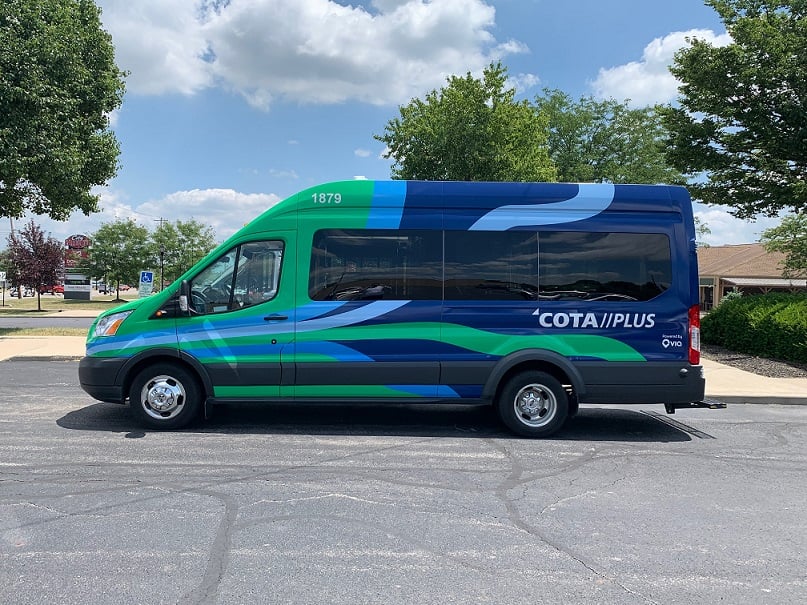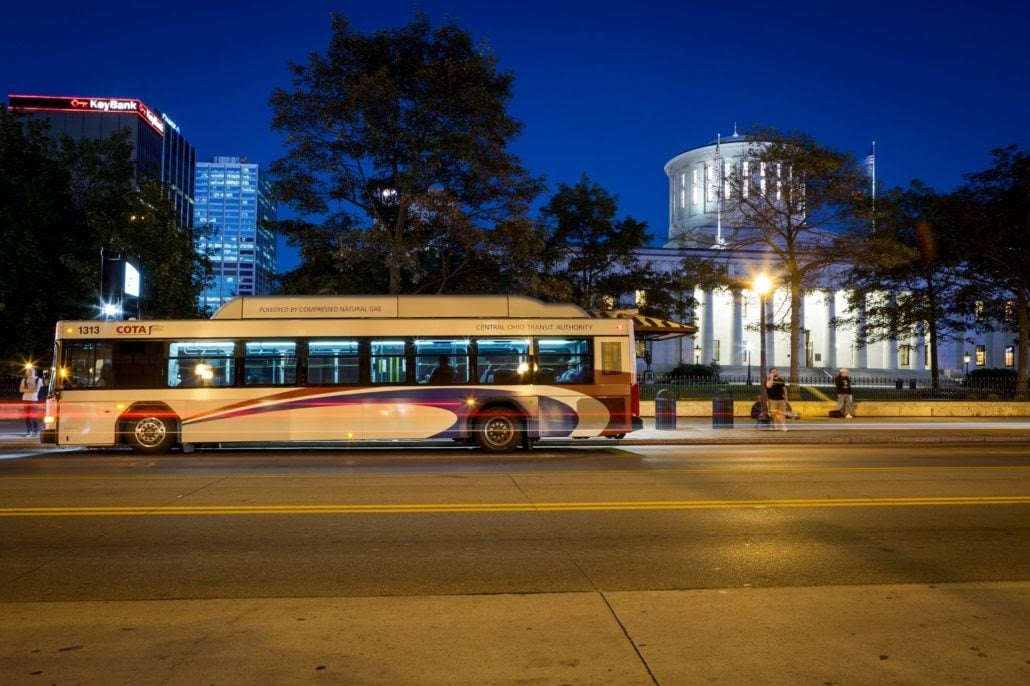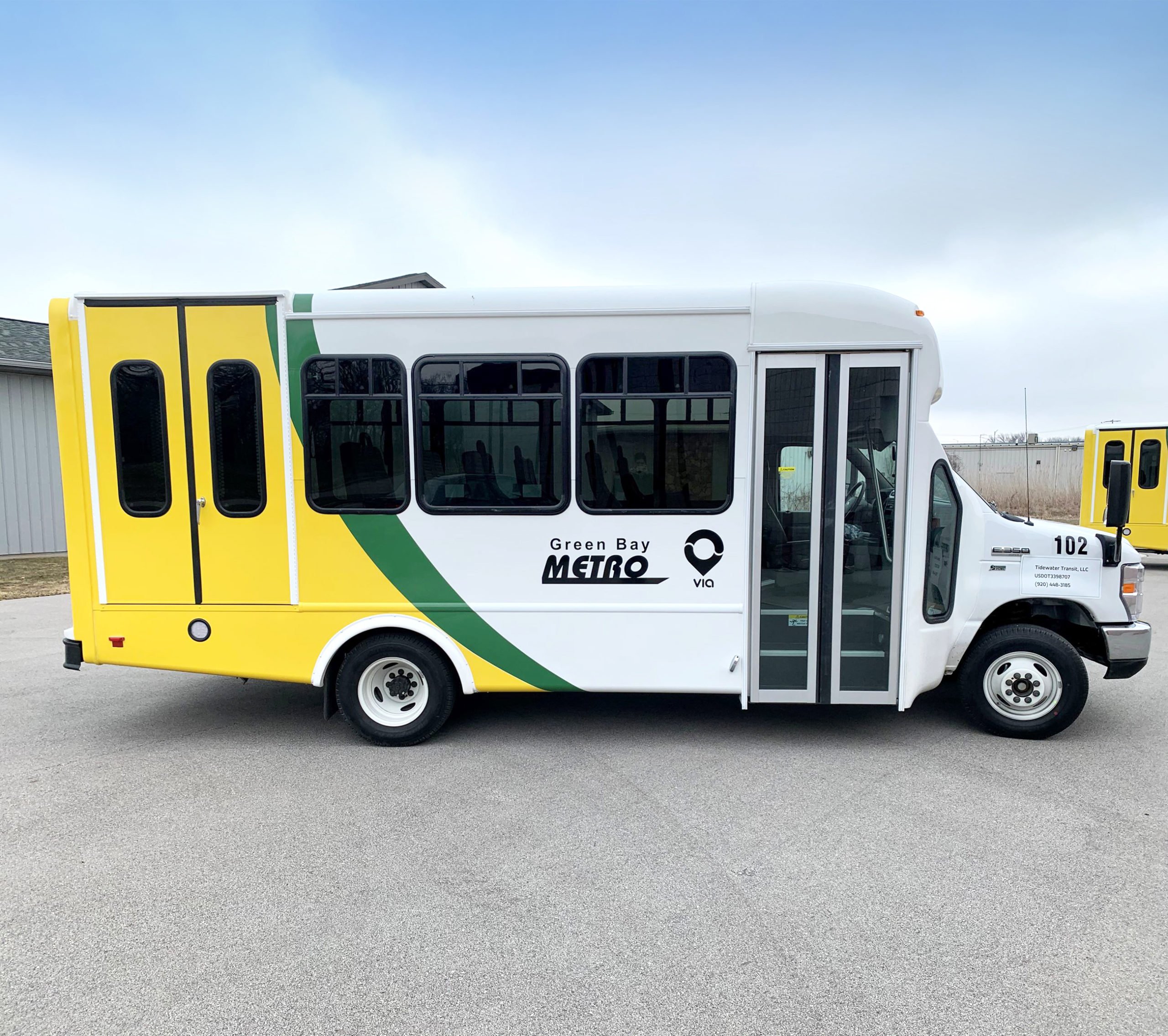In the depths of the COVID-19 pandemic, communities across the US are facing tough questions about the fate of public transit. Ridership has dipped as many people continue to work from home. But the costs to maintain transit systems remain constant. Making cuts and reducing service saves money in the short term, but it also removes critical access to jobs — particularly those held by essential workers — and makes traffic congestion worse. Several Midwestern cities have been extracting more productivity from resources they already have. While pre-pandemic ridership levels might return as the pandemic subsides, that doesn’t mean systems that were strained or aging before the pandemic still won’t need a boost. Yet among increasingly cash-strapped city governments and transit authorities, the appetite for any ‘innovation’ (a word that might mean more consistent ridership but seems to also entail massive investments) in transit infrastructure remains understandably low.
It seems like an unsolvable problem. That is, until we realize that a huge investment isn’t actually necessary. In fact, several Midwestern cities Via partners with have been extracting more productivity from resources they already have.
Doing more with less in Columbus.
Columbus, Ohio, was feeling the strain in 2020 as the combination of remote work, furloughs, and layoffs led to a steep drop in public transit usage. Several fixed route buses were significantly underutilized, and the city faced a decision about whether to cut them altogether. Fortunately, the Central Ohio Transit Authority (COTA) already had experience with on-demand technology through their microtransit service.
 So, instead of cutting the underused bus routes or investing in any new microtransit vehicles, city leadership turned the buses they already had into an on-demand service. COTA//Plus Bus On-Demand provides service to and from transit stops in Columbus, Gahanna, and New Albany. Riders can request trips by phone or through the same app used for the city’s microtransit network.
So, instead of cutting the underused bus routes or investing in any new microtransit vehicles, city leadership turned the buses they already had into an on-demand service. COTA//Plus Bus On-Demand provides service to and from transit stops in Columbus, Gahanna, and New Albany. Riders can request trips by phone or through the same app used for the city’s microtransit network.
Thanks to COTA’s creativity, rider wait times for the bus are down to 11-12 minutes from the previous average of 30-45 minutes. Together, the on-demand services have improved access to 83% of the city’s fixed routes and massively extended overall transit coverage. Even more importantly, 96% of the more than 5,000 COTA//Plus Bus On-Demand riders have rated the service five out of five stars.

The takeaway: Columbus improved utilization and rider satisfaction without adding a single bus to its fleet. The solution was not operationally or technologically complex, and it did not require a huge capital investment or years-long phased implementation. On-demand transit just worked.
Enhancing paratransit in Green Bay.
Leaders at Green Bay Metro in Green Bay, Wisc., wanted to improve the trip experience for paratransit riders in the community. Riders and caregivers alike found the previous system difficult to use and complained of unreliable scheduling and poor visibility into both booked rides and the location of their vehicle.

In April 2020, Green Bay Metro partnered with Via to revamp their system with new TransitTech. Via assumed full operation of the paratransit service, smoothly transitioning from the previous operator. With the new service came new features: A web portal and custom smartphone app that supplemented phone booking, while offering clear visibility into vehicle locations and arrival times.
Building on the success of the refreshed paratransit offering, Green Bay Metro launched GBM On-Demand for all residents. GBM On-Demand extends Green Bay’s transit infrastructure, making it easier for anyone to share rides to key transit hubs, commercial areas, and healthcare destinations. Critically, both microtransit and paratransit utilize the same 12-vehicle fleet. The on-demand service has already achieved 98% on-time performance, and saw a 2.5x ridership bump in Q4 of 2020. Plus, the paratransit service hasn’t missed a single trip since launch.

Just as in Columbus, transit leaders in Green Bay were able to generate higher productivity from existing public transportation infrastructure without a flashy, complicated, or unproven solution. Instead, a more straightforward and flexible approach got the job done, without breaking the bank. This strategy of “doing more with less” can work in just about any community that’s willing to be a bit creative with transit resources. Budgets will stay level as ridership improves, new populations are served, and gaps in service are filled.




